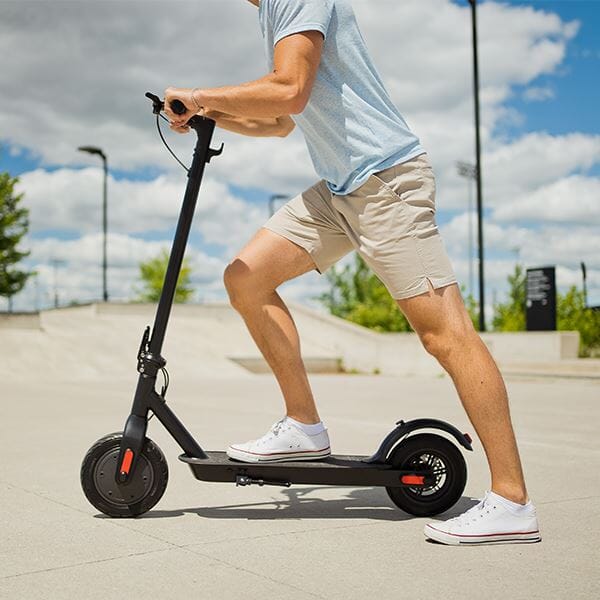
Electric Scooter Guide: Everything You Need to Know
Looking for an electric scooter guide to help you navigate the world of electric scooters? Whether you’re a beginner or a seasoned rider, this comprehensive guide will provide all the essential information to help you choose the right electric scooter for your needs. From understanding key features to maintenance tips, we’ve got you covered.
What is an Electric Scooter?
An electric scooter is a battery-powered vehicle designed for short-distance travel. They are lightweight, eco-friendly, and an excellent alternative to cars or public transport for city commuting. With their growing popularity, the options available have diversified, catering to different budgets, rider preferences, and environments.
Why Choose an Electric Scooter?
Electric scooters offer numerous benefits:
- Eco-Friendly Transportation: They produce zero emissions, making them an environmentally conscious choice.
- Cost-Effective: Electric scooters are affordable to maintain, with minimal charging costs compared to gas-powered vehicles.
- Convenient for Urban Commutes: They are perfect for navigating congested city streets and are easy to park and store.
- Fun to Ride: Whether for commuting or leisure, riding an electric scooter can be enjoyable and practical.
Key Features to Consider When Choosing an Electric Scooter
Before making a purchase, it’s crucial to understand the key features that define an electric scooter. This electric scooter guide will walk you through the essential aspects to help you make an informed decision.
1. Battery Life and Range
Battery capacity dictates how far you can travel on a single charge. The range can vary significantly between models, with some scooters offering as little as 10 miles, while others provide up to 60 miles. When selecting a scooter, consider your typical riding distance to ensure you won’t run out of power midway through your journey.
2. Top Speed
Different scooters have varying top speeds, with most offering between 15 to 30 mph. Consider how fast you need to go based on your local terrain and road conditions. For urban commuting, a top speed of 15-20 mph is generally sufficient.
3. Weight and Portability
The weight of an electric scooter is another crucial factor, especially if you plan to carry it onto public transport or store it indoors. Most scooters weigh between 20-50 pounds. Foldable designs add to the convenience, making storage and transport easier.
4. Weight Capacity
Always check the scooter’s weight capacity to ensure it can accommodate your body weight. Most adult electric scooters support 220-260 pounds, but there are models for heavier riders that support up to 300 pounds or more.
5. Motor Power
The motor’s power, measured in watts, affects acceleration and the scooter’s ability to handle inclines. For most urban commutes, a 250-350W motor is sufficient, while heavier models or scooters designed for hillier areas may feature 500-1000W motors.
6. Braking System
There are two main types of braking systems in electric scooters: mechanical and electronic. Mechanical brakes (disc or drum brakes) provide more reliable stopping power, while electronic brakes help with speed modulation. A combination of both is ideal for safe riding.

Types of Electric Scooters
In this section of the electric scooter guide, we’ll explore the different types of electric scooters available to suit various rider preferences and needs.
1. Commuter Electric Scooters
Designed for urban travelers, commuter electric scooters prioritize portability, lightweight frames, and range suitable for daily travel. These scooters typically offer moderate speeds and ranges of 10-25 miles, ideal for short commutes.
2. Off-Road Electric Scooters
If you need a more robust scooter for rough terrains, off-road electric scooters come with larger tires, higher ground clearance, and powerful motors. These scooters are designed to handle dirt paths, gravel, and other uneven surfaces, making them great for outdoor enthusiasts.
3. Performance Electric Scooters
Performance scooters are built for speed and power. They feature higher watt motors, can reach top speeds of 30 mph or more, and often have longer ranges. These scooters are perfect for thrill-seekers or those who want faster travel times.
4. Folding Electric Scooters
For ultimate portability, folding electric scooters are a popular choice. These scooters can easily be collapsed and carried, making them convenient for users who rely on public transport or have limited storage space.
How to Maintain Your Electric Scooter
Proper maintenance will ensure your electric scooter lasts longer and performs at its best. Here are some essential maintenance tips every rider should follow:
1. Regularly Charge the Battery
Make sure to charge your scooter’s battery before it drops to zero. Regular charging helps maintain battery health and ensures you’re always ready for your next ride. It’s also essential to avoid overcharging, which can reduce battery lifespan.
2. Check Tire Pressure
For scooters with pneumatic tires, keeping them inflated to the correct pressure is crucial for safety and performance. Under-inflated tires can reduce speed and increase the risk of punctures.
3. Inspect the Brakes
Before every ride, check the brakes to ensure they’re responsive. Adjustments may be needed over time, especially for mechanical brake systems. Well-maintained brakes are essential for your safety, particularly at higher speeds.
4. Clean Your Scooter Regularly
Dirt and debris can affect the performance of your scooter, especially the wheels and brake system. Clean your scooter regularly with a soft cloth and mild detergent. Avoid using high-pressure water to prevent damaging electronic components.
Electric Scooter Safety Tips
Safety should always be a priority when riding your electric scooter. Follow these tips to stay safe on the road:
- Wear a Helmet: Always wear a helmet to protect your head in case of accidents.
- Follow Traffic Rules: Electric scooters are often treated like bicycles on the road. Obey traffic signals, ride in bike lanes where available, and be cautious at intersections.
- Use Lights and Reflectors: If you ride at night, ensure your scooter has working front and rear lights and reflectors to increase visibility.
- Be Aware of Your Surroundings: Stay alert to other vehicles, pedestrians, and road hazards. Avoid distractions such as mobile phones while riding.
In conclusion, this electric scooter guide provides everything you need to know about choosing, maintaining, and safely riding your electric scooter. Whether you’re looking for a commuter-friendly model or a high-performance ride, understanding the key features and options available will help you make the best decision for your needs.
Happy riding!
